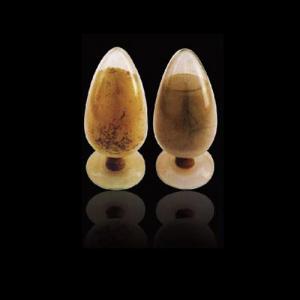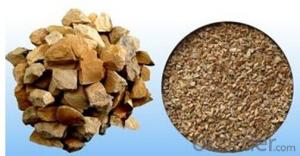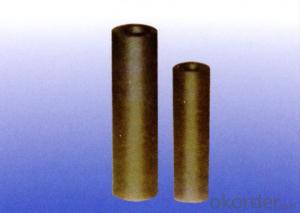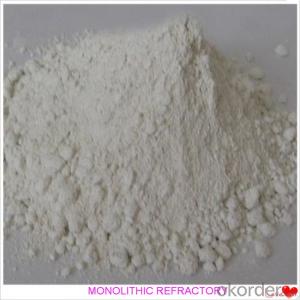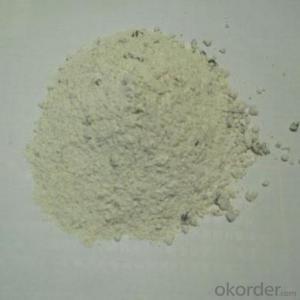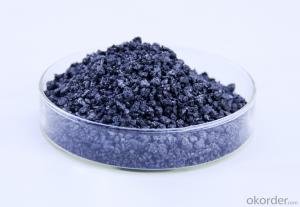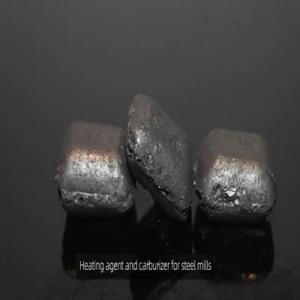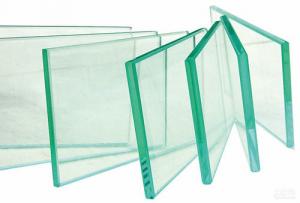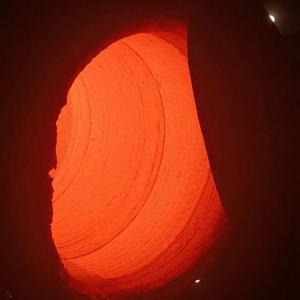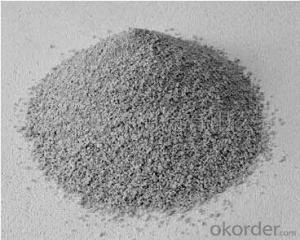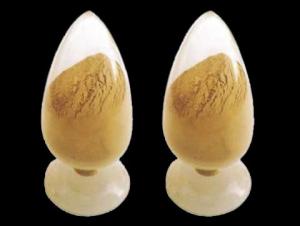Castable Refractory For Cement Kiln and Boiler
- Loading Port:
- China Main Port
- Payment Terms:
- TT OR LC
- Min Order Qty:
- -
- Supply Capability:
- -
OKorder Service Pledge
OKorder Financial Service
You Might Also Like
Benefits:
1) Good performance to thermal stability, slag and abrasion resistance.
2) Good fluidity and convenient to install and maintain
3) Less installation and drying/sintering time
4) Efficiently reduced the production stoppages & downtimes
5) Labor and cost saving by prolonging campaign length.
| Refractory Castable for cement kiln | | | | |
| Items | HGJ-1 | HAJ-3 | HAM-2 | HAL-2 |
| Main Contents | Al2O3 | Al2O3 | MgO-Al2O3 | Al2O3-SiO2 |
| Characteristics | High strength anti-abrasion steel fiber castables | Chemical-bonding refractory castables | Low cement magnesium-aluminum castables | high purity bauxite low cement |
| Refractoriness | 1950℃ | 2150℃ | 2150℃ | 1700℃ |
| Density | 2.95g/cm3 | 2.89g/cm3 | 2.92g/cm3 | 2.55g/cm3 |
| Compressive Strength | 110℃×2h68.5MPa; | 110℃×2h59.2MPa; | 110℃×2h40.8MPa; | 110℃×2h52MPa |
| | 1500℃×3h 96.8 MPa | 1500℃×3h106.1MPa | 1500℃×3h102.5MPa | 1500 ℃×3h 75 MPa |
| Permanent Linear Changing Rate | 1500℃×3h+0.21% | 1500℃×3h+0.29% | 1500℃×3h+0.32% | 1500℃×3h±0.5% |
| Installation mode | casting | casting | casting | casting |
| Additive required | 5-10%water | 5-10%water | 5-10%water | 5-10%water |
| Application | Rotary kiln or industry furnace | Industry kiln | Ladle | differentpartsforcementkiln |
characteristics:
1. The dosage of cement is low, the content of calcium only accounts for 1/4-1/3 of common Refractory Castable
2. Wter consumption rate during the construction is almost 1/2 or 1/3 of the common Refractory Castable, so the Low Cement Refractory Castable has high density and low porosity.
3. High normal temperature cure property, intensity will be increased after medium temperature and high temperature. Three or five times more than common Refractory Castable.
4. Good volume stability under high temperature.
Application:
Material for metallurgy, petroleum, chemical and other industries kilns
Part of refining installation, like ladle cover
Insert for roof of the kiln
- Q:What are the specific requirements of monolithic refractories for continuous casting applications?
- The specific requirements of monolithic refractories for continuous casting applications are designed to withstand the extreme temperatures and thermal shock conditions experienced during the continuous casting process. Firstly, these refractories must have high thermal conductivity to effectively transfer heat away from the molten metal and maintain a stable casting temperature. This helps to prevent the formation of defects such as cracks, hot spots, and uneven solidification in the cast product. Secondly, monolithic refractories for continuous casting applications must have high refractoriness, meaning they can withstand the high temperatures of the molten metal without melting or deforming. This ensures the refractories can provide a protective lining and maintain their structural integrity throughout the casting process. Additionally, these refractories must have excellent resistance to thermal shock. The continuous casting process involves rapid cooling and heating cycles, which can create significant temperature differentials and induce thermal stresses. Monolithic refractories with low thermal expansion and high thermal shock resistance can withstand these conditions without cracking or spalling. Furthermore, good erosion and corrosion resistance are crucial requirements for monolithic refractories in continuous casting applications. The molten metal and slag can be highly corrosive and abrasive, leading to wear and chemical attack on the refractory lining. Hence, refractories with high resistance to erosion and corrosion are essential to ensure the longevity and stability of the lining. Lastly, monolithic refractories for continuous casting applications should have good workability and ease of installation. This allows for efficient and precise lining installation, reducing downtime during maintenance or repairs. Overall, the specific requirements of monolithic refractories for continuous casting applications include high thermal conductivity, refractoriness, thermal shock resistance, erosion and corrosion resistance, as well as good workability. Meeting these requirements ensures the refractories can effectively protect the casting equipment and maintain the quality of the cast products.
- Q:What types of monolithic refractories are commonly used in the iron and steel industry?
- Commonly used monolithic refractories in the iron and steel industry include castables, gunning mixes, and ramming mixes.
- Q:What are the considerations for repairing and patching monolithic refractories?
- When it comes to the repair and patching of monolithic refractories, there are several key factors that must be taken into consideration. First and foremost, it is crucial to thoroughly evaluate the extent and severity of the damage or deterioration. This assessment will help determine the most appropriate repair method and materials required. Minor cracks or small damages may only necessitate a simple patch or seal, whereas larger or more serious damage may require a complete replacement or a more extensive repair process. Secondly, the type of monolithic refractory material being utilized is a critical factor to consider. Different types of monolithic refractories possess varying properties and characteristics, such as thermal conductivity, chemical resistance, and mechanical strength. Therefore, it is vital to select a repair material that is compatible with the existing refractory material, ensuring proper bonding and optimal performance. Another factor to take into account is the operating conditions and environment in which the monolithic refractory is exposed. Variables such as temperature, pressure, chemical exposure, and abrasion can significantly impact the durability and longevity of the refractory material. Understanding these conditions will assist in selecting the appropriate repair materials and techniques that can withstand and perform well under these specific circumstances. Furthermore, it is imperative that the repair process is carried out by experienced personnel who possess knowledge about refractory materials and their installation. Improper repairs can lead to further damage or diminished performance, so it is essential to have skilled professionals who can execute the repair work correctly. Lastly, regular inspection and maintenance of the monolithic refractories are crucial in order to detect any potential damage or deterioration early on. Timely repairs and patching can prevent further deterioration and prolong the service life of the refractory material. In summary, the considerations for repairing and patching monolithic refractories involve evaluating the extent of damage, selecting compatible repair materials, understanding the operating conditions, employing skilled personnel, and conducting regular inspections and maintenance. By taking these factors into account, one can ensure effective repairs and the continued performance of monolithic refractories.
- Q:How are monolithic refractories installed and repaired in iron and steel plants?
- Monolithic refractories play a vital role in iron and steel plants, offering resistance to high temperatures and insulation. They are widely utilized in various applications, including lining furnaces, ladles, and equipment that comes into contact with molten metal. The process of installing monolithic refractories in iron and steel plants typically involves several sequential steps. Initially, the surface where the refractory material will be applied must be prepared, removing any existing refractories or contaminants. This can be accomplished through mechanical means, such as sandblasting, or through chemical cleaning processes. Following this, the monolithic refractory material is mixed with water or a suitable binder to achieve a workable consistency. The resulting mixture is then applied to the prepared surface using a variety of techniques, such as gunning, casting, or troweling. Gunning involves using a high-pressure gun to spray the refractory material onto the surface, while casting involves pouring the mixture into a mold. Troweling is a manual method that entails spreading the refractory material with a trowel. After the application of the refractory material, it must be appropriately cured or dried. This is usually accomplished by allowing the material to air dry or by employing controlled heating. The curing process is imperative to ensure that the refractory material develops the desired properties, including strength and resistance to thermal shock. Regarding repairs, monolithic refractories in iron and steel plants may deteriorate over time due to the harsh operating conditions. When repairs are necessary, damaged or worn-out sections of the refractory lining need to be identified. This can be achieved through visual inspection or non-destructive testing techniques. The repair procedure generally involves removing the damaged refractory material by chipping, drilling, or cutting. The surface is then prepared as previously mentioned, and a fresh batch of monolithic refractory material is applied to reinstate the lining. The repair material must be compatible with the existing lining and provide similar properties to ensure the overall integrity of the refractory structure. It is important to highlight that the installation and repair of monolithic refractories in iron and steel plants necessitate skilled personnel who possess knowledge of refractory materials and installation techniques. Additionally, proper safety precautions should be adhered to in order to safeguard workers from potential hazards, such as exposure to high temperatures, dust, and chemicals. Regular inspection and maintenance are also critical to identify any potential issues early on and prevent major failures that could affect production and safety.
- Q:How do monolithic refractories contribute to the control of spalling in iron and steel processes?
- Monolithic refractories play a crucial role in controlling spalling in iron and steel processes. Spalling refers to the phenomenon of the refractory material breaking or flaking off due to thermal stress, mechanical stress, or chemical reactions. This can lead to severe damage to the lining of the furnace or kiln, reducing its efficiency and productivity. To address this issue, monolithic refractories are specifically designed to be more resistant to spalling compared to traditional brick or tile refractories. They are composed of a single, homogenous material that is able to withstand high temperatures and thermal shock, making them less prone to cracking or breaking under extreme conditions. The ability of monolithic refractories to control spalling in iron and steel processes is primarily attributed to their high thermal conductivity and low thermal expansion properties. These characteristics allow them to effectively distribute and absorb the intense heat generated during melting or heat treatment processes, minimizing the thermal stress on the refractory lining. Additionally, monolithic refractories offer better resistance to chemical reactions and erosion caused by molten metal, slag, or gases that are present in iron and steel processes. They are formulated with additives and binders that enhance their chemical stability and protect against corrosion, reducing the risk of spalling due to chemical attack. Furthermore, the monolithic nature of these refractories eliminates the need for joints or seams, which are common weak points in traditional brick or tile refractories. This seamless design ensures a more uniform and durable lining, reducing the chances of spalling occurring at these vulnerable areas. Overall, monolithic refractories contribute significantly to the control of spalling in iron and steel processes by providing superior thermal conductivity, low thermal expansion, chemical resistance, and a seamless lining. This helps to maintain the integrity of the refractory lining, prolonging its lifespan and ensuring efficient and safe operation of the furnace or kiln.
- Q:What are the key factors affecting the installation and curing of monolithic refractories?
- There are several key factors that affect the installation and curing of monolithic refractories: 1. Material selection: The choice of monolithic refractory material is crucial as it determines the installation and curing process. Different materials have different installation and curing requirements, so it is important to select the right material for the specific application. 2. Surface preparation: Proper surface preparation is essential for the successful installation and curing of monolithic refractories. The surface should be clean, free from contaminants, and properly roughened to ensure good adhesion of the refractory material. 3. Mixing and proportioning: The mixing and proportioning of the refractory material play a significant role in its installation and curing. It is important to follow the manufacturer's instructions for mixing ratios and ensure thorough mixing to achieve a homogeneous mixture. 4. Application technique: The technique used to apply the monolithic refractory material can greatly impact its installation and curing. Proper application techniques, such as gunning, casting, or ramming, should be employed to ensure uniformity and proper bonding with the substrate. 5. Temperature control: Temperature control during the installation and curing process is critical for the development of desired properties in the monolithic refractory. The curing process should be carried out at the recommended temperature, and any sudden temperature changes should be avoided to prevent thermal stresses. 6. Moisture content: The moisture content of the refractory material and the surrounding environment can affect its installation and curing. Excessive moisture can lead to shrinkage, cracking, or poor bonding, while insufficient moisture can hinder proper curing. It is important to maintain the optimum moisture content for the specific refractory material. 7. Curing time: The curing time required for monolithic refractories varies depending on the material and application. It is crucial to follow the recommended curing time to allow for proper strength development and dimensional stability. 8. Environmental conditions: Environmental factors, such as humidity, temperature, and air circulation, can influence the installation and curing of monolithic refractories. Suitable environmental conditions should be maintained to facilitate proper drying and curing. Overall, understanding and addressing these key factors can ensure the successful installation and curing of monolithic refractories, leading to improved performance and longevity of the refractory lining.
- Q:How do monolithic refractories impact the quality and performance of iron and steel products?
- Monolithic refractories play a crucial role in ensuring the quality and performance of iron and steel products. These refractories are specifically designed to withstand extremely high temperatures and harsh conditions, making them an essential component in various applications within the iron and steel industry. Firstly, monolithic refractories contribute to the overall quality of iron and steel products by providing excellent thermal insulation. They help to maintain a consistent and controlled temperature environment in the manufacturing process. This is particularly important in blast furnaces, where temperatures can reach up to 2,000 degrees Celsius. By effectively insulating the furnace walls, monolithic refractories help to minimize heat loss and ensure efficient energy utilization. This ultimately leads to higher-quality products with improved mechanical properties. Secondly, monolithic refractories offer superior resistance to chemical and physical wear. In the steelmaking process, molten metal and slag can be highly corrosive, causing erosion and degradation of the refractory lining. Monolithic refractories are specifically engineered to withstand these aggressive environments, providing excellent resistance to chemical attack and mechanical stress. By maintaining the integrity of the lining, they prevent contamination and prolong the lifespan of the furnace or ladle, ultimately enhancing the quality of the final iron and steel products. Furthermore, monolithic refractories enable greater design flexibility and ease of installation. Unlike traditional refractory bricks, which require meticulous placement and fitting, monolithic refractories can be applied as a single, cohesive material. This allows for more complex shapes and structures, resulting in optimized furnace design and improved thermal efficiency. Additionally, the ease of installation reduces downtime during maintenance and repairs, ensuring continuous production and minimizing disruptions to the production process. Overall, monolithic refractories significantly impact the quality and performance of iron and steel products. They provide excellent thermal insulation, resist chemical and physical wear, and offer greater design flexibility. By ensuring consistent and controlled temperature environments, preventing contamination, and enabling efficient production processes, monolithic refractories contribute to the production of high-quality iron and steel products that meet the stringent requirements of various industries.
- Q:How do monolithic refractories improve the lining of converters and refining vessels?
- Improving the lining of converters and refining vessels is a crucial role played by monolithic refractories in several ways. To begin with, these refractories offer exceptional thermal insulation properties, which effectively maintain the desired temperature within the converters and refining vessels. This is particularly important as the metallurgical processes require high temperatures to be effective. Furthermore, the high chemical resistance of monolithic refractories is vital in the harsh conditions of converters and refining vessels. These vessels often come into contact with corrosive materials and aggressive slags, but the monolithic refractories prevent any deterioration or erosion of the lining caused by these substances. In addition, the mechanical strength and stability provided by monolithic refractories ensure that the lining remains intact even under high operational stresses. This is especially significant in converters and refining vessels where frequent mechanical movements and thermal expansions occur. Moreover, monolithic refractories offer easy installation and repair compared to traditional bricks, which require complex and time-consuming assembling. Monolithic refractories can be applied as a single mass, minimizing downtime during installation or repair. This results in time and cost savings for maintaining the lining of converters and refining vessels. Overall, the utilization of monolithic refractories significantly enhances the performance and longevity of converters and refining vessels. Their excellent thermal insulation, chemical resistance, mechanical strength, and ease of installation and repair guarantee efficient and reliable operation in metallurgical processes.
- Q:What are the key properties and characteristics of monolithic refractories?
- Monolithic refractories, renowned for their ability to be shaped or installed in a single piece without joints, are a type of refractory material. They find their utility in high-temperature applications where traditional brick or tile refractories may not suffice. One noteworthy attribute of monolithic refractories lies in their superior thermal stability. They can withstand extreme temperatures without significant expansion or contraction, making them an ideal choice for furnaces, kilns, and other heat-intensive environments. This quality ensures the maintenance of their structural integrity and grants long-lasting performance. Another significant characteristic of monolithic refractories is their high resistance to thermal shock. They can endure abrupt temperature changes without cracking or spalling, a crucial aspect when the refractory material is exposed to alternating hot and cold conditions. The resistance to thermal shock ensures the refractory lining's longevity, reducing the need for frequent repairs or replacements. Monolithic refractories also demonstrate commendable mechanical strength, enabling them to withstand the mechanical stresses and loads imposed on them during usage. They possess excellent load-bearing capacity, resisting abrasion, erosion, and impact, making them suitable for applications where the refractory material faces mechanical wear or impact. Moreover, monolithic refractories offer the advantage of easy installation and repair. Unlike traditional refractories that necessitate skilled labor and time-consuming bricklaying techniques, monolithic refractories can be cast, gunned, or sprayed into place. This effortless installation expedites turnaround times and minimizes downtime during repairs or maintenance. Lastly, monolithic refractories exhibit commendable chemical resistance to various corrosive agents, such as acids, alkalis, and molten metals. This property renders them suitable for use in industries where the refractory material encounters aggressive chemical environments, including the steel, petrochemical, and glass industries. In summary, monolithic refractories possess excellent thermal stability, high resistance to thermal shock, good mechanical strength, effortless installation and repair, and commendable chemical resistance. These properties establish them as the preferred choice in high-temperature applications where durability, reliability, and performance are of utmost importance.
- Q:What are the factors affecting the thermal expansion of monolithic refractories?
- The thermal expansion of monolithic refractories is influenced by several factors. These factors include the chemical composition of the refractory material, particle size, temperature, thermal history, porosity, binder content, and thermal shock. 1. The thermal expansion of the refractory material is significantly influenced by its chemical composition. Different chemical elements and compounds have varying coefficients of thermal expansion. For instance, materials with high levels of silica generally have lower coefficients of thermal expansion compared to those with higher concentrations of alumina. 2. The particle size distribution of the refractory material can also impact its thermal expansion. Smaller particle sizes result in higher thermal expansion due to increased surface area and greater particle contact. 3. The temperature at which the monolithic refractory is exposed plays a crucial role in its thermal expansion. As the temperature increases, the particles gain more kinetic energy, leading to increased movement and expansion. Different refractory materials exhibit significant expansion within specific temperature ranges. 4. The thermal history of the refractory material, including its heating and cooling cycles, can influence its thermal expansion behavior. Repeated heating and cooling cycles can induce microstructural changes in the material, affecting its thermal expansion properties. 5. The porosity of the monolithic refractory also affects its thermal expansion. Higher porosity generally results in higher thermal expansion due to the presence of voids and gaps within the material. 6. The type and amount of binder used in monolithic refractories impact their thermal expansion. Different binders have different coefficients of thermal expansion, which can influence the overall expansion behavior of the material. 7. Rapid temperature changes, such as quenching or exposure to alternating heating and cooling, can cause thermal shock in the refractory material. This can lead to cracks, spalling, and changes in thermal expansion behavior. Understanding these factors is essential when selecting the appropriate monolithic refractory material for specific applications. The thermal expansion characteristics directly affect the performance and longevity of the refractory in high-temperature environments.
1. Manufacturer Overview |
|
|---|---|
| Location | |
| Year Established | |
| Annual Output Value | |
| Main Markets | |
| Company Certifications | |
2. Manufacturer Certificates |
|
|---|---|
| a) Certification Name | |
| Range | |
| Reference | |
| Validity Period | |
3. Manufacturer Capability |
|
|---|---|
| a)Trade Capacity | |
| Nearest Port | |
| Export Percentage | |
| No.of Employees in Trade Department | |
| Language Spoken: | |
| b)Factory Information | |
| Factory Size: | |
| No. of Production Lines | |
| Contract Manufacturing | |
| Product Price Range | |
Send your message to us
Castable Refractory For Cement Kiln and Boiler
- Loading Port:
- China Main Port
- Payment Terms:
- TT OR LC
- Min Order Qty:
- -
- Supply Capability:
- -
OKorder Service Pledge
OKorder Financial Service
Similar products
New products
Hot products
Related keywords


